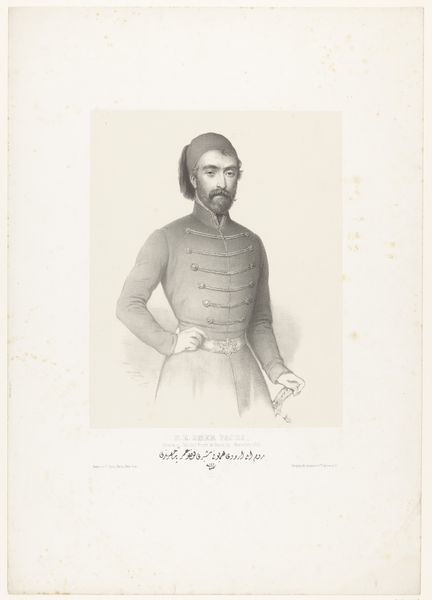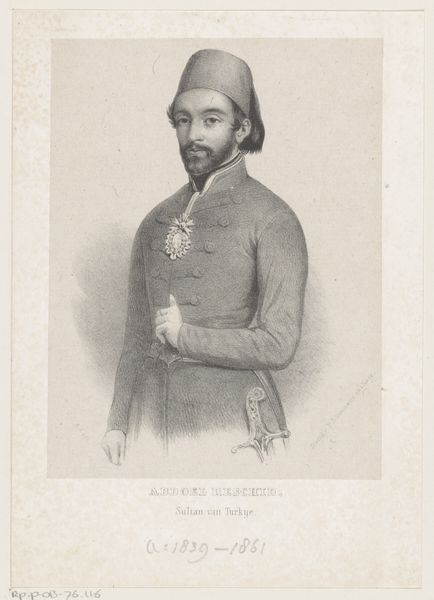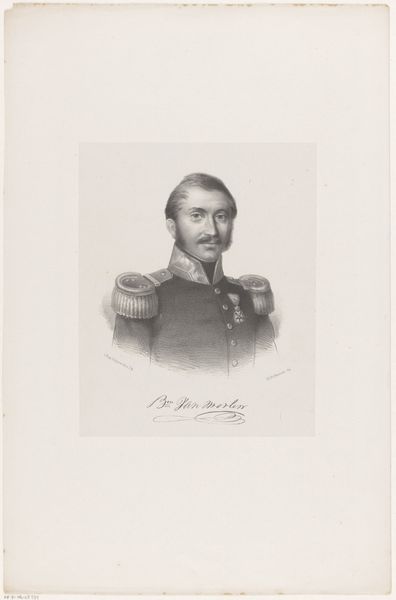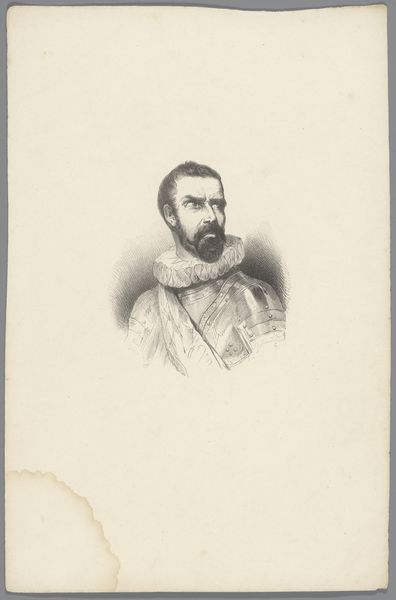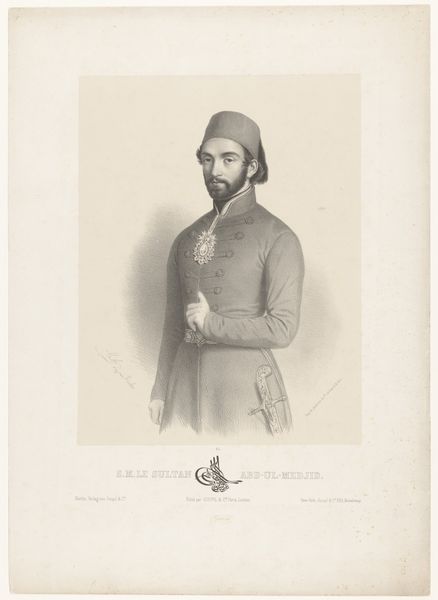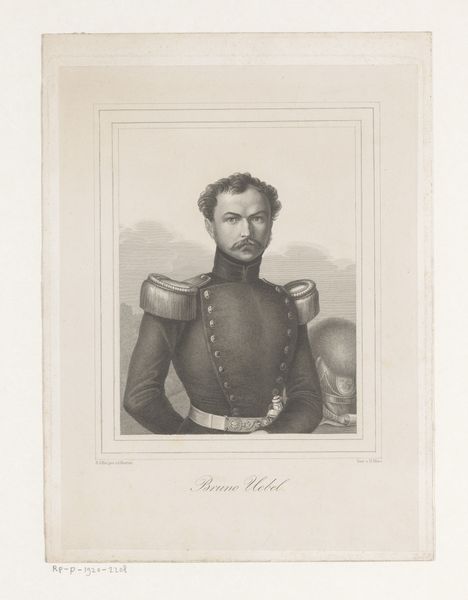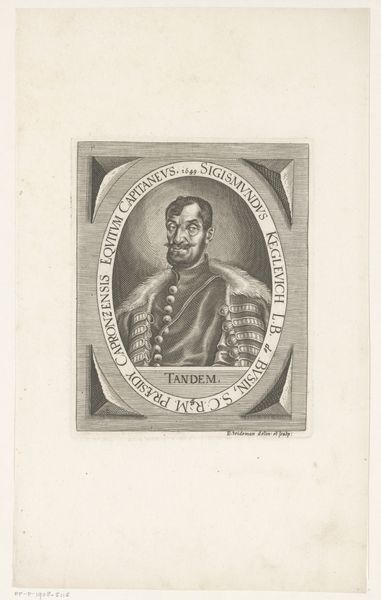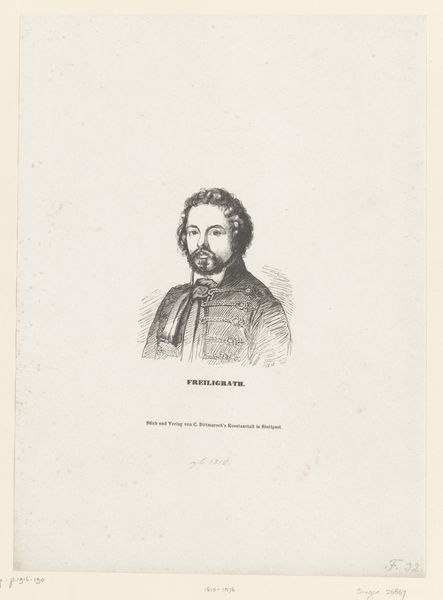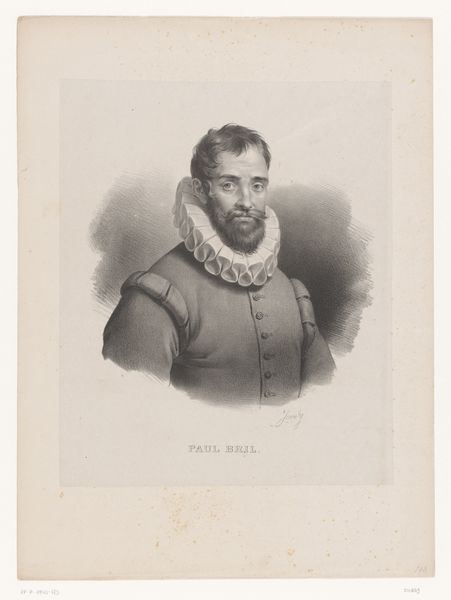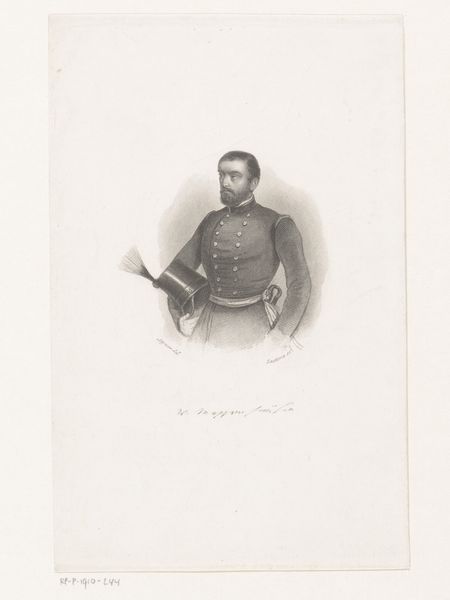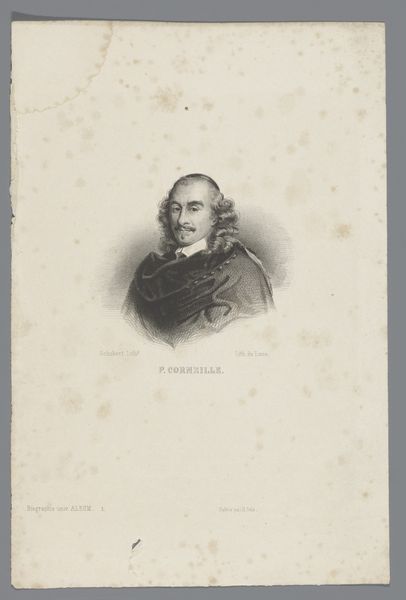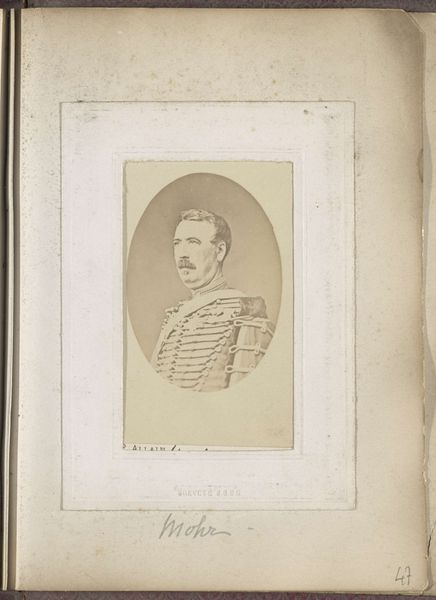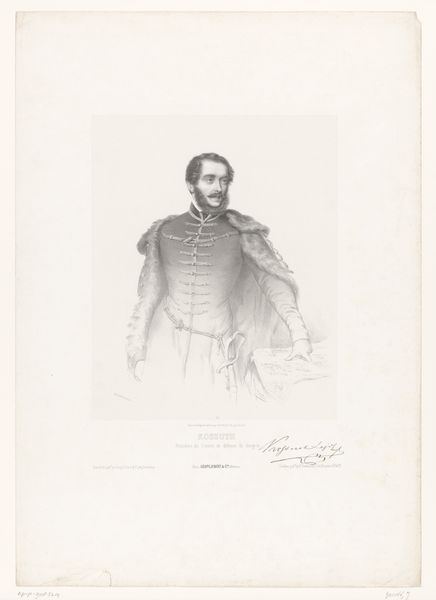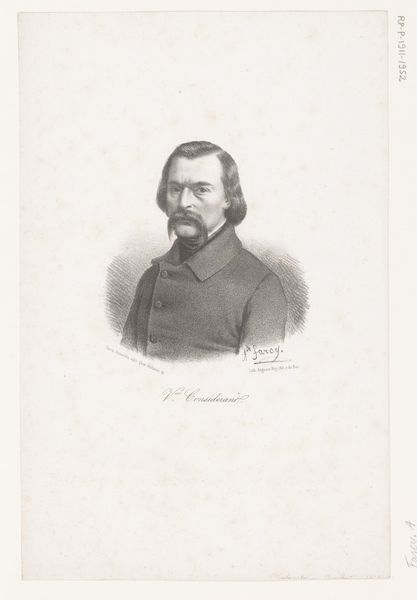
print, engraving
#
portrait
# print
#
historical photography
#
history-painting
#
engraving
Dimensions: height 155 mm, width 125 mm
Copyright: Rijks Museum: Open Domain
Curator: This is a portrait of Omar Pasha, likely created sometime between 1836 and 1876 by Carel Christiaan Antony Last. It's an engraving, a type of print, residing here at the Rijksmuseum. Editor: It has an austerity that draws me in. The limited tonal range makes every small detail pop—especially the figure’s clothing, all those decorative lines. Curator: That starkness likely comes from the engraving process. Each line meticulously etched. But the image also embodies ideas of 19th-century leadership. Think of portraits of Napoleon and consider how this image projects Ottoman power through its carefully constructed likeness. Editor: Exactly! This piece serves both a representational purpose and a functional one, as a means of memorialization and state-sanctioned image-making. You get a real sense of material presence, the paper and ink that form the base. Who created this? Curator: Carel Christiaan Antony Last. It's fascinating how the very act of creating the print reproduces Ottoman authority through this symbolic system. The fezes, the tailored uniform…it communicates power through the layering of signifiers. Editor: How would such a print have been circulated and consumed? Curator: Probably pretty widely! Engravings enabled mass production. These could have appeared in illustrated newspapers or been sold as individual prints, thus broadcasting an image of Ottoman strength. But what about you? What details intrigue you most? Editor: Definitely the uniform! The craft and labor to produce these materials! I keep considering the social hierarchies inherent in the textile industry. This print visualizes power but elides the cost of this imperial project. Curator: A keen insight into the human element! The image operates on multiple levels, one glorifying command, the other silently referencing those who enable such displays. A really revealing tension in play! Editor: This experience has made me consider what visual choices are encoded into such works of reproduction, beyond a desire to convey some stable “likeness."
Comments
No comments
Be the first to comment and join the conversation on the ultimate creative platform.
